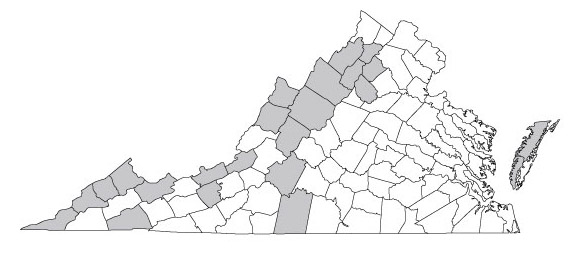Virginia Land Snails
.jpg)
.jpg)
Photo(s): The common leaf-litter snail Striatura meridionalis, by Jeff Nekola ©. A close look at the first whorl, or protoconch, which develops in the egg, shows fine spiral lirae.
Click photo(s) to enlarge.
Striatura meridionalis (Pilsbry and Ferriss, 1906)
Family: Gastrodontidae
Common name: Median Striate
Identification
Width: 1.75 mm
Height: 1 mm
Whorls: 3.5
Striatura meridionalis has a depressed heliciform shell with fine radial ridges, very similar to S. milium. It differs in that it is slightly larger, has distinct, fine, spiral lirae on its nuclear whorl, and coarser shell microsculpture than S. milium. The umbilicus is open, and the aperture is angled downward slightly.
Ecology
Striatura meridionalis can be found in moist leaf litter in hardwood forests, and occasionally on floodplains. This animal is widespread and abundant in the central and southern Appalachian Mountains. It was the most common land snail in the Hiwassee River Basin of Tennessee (Coney et al, 1982), and the second most common snail on upland forest sites in western Maryland (Hotopp, 2002).
Taxonomy
Striatura meridionalis has also been known as Radiodiscus orizabensis, Striatura (Pseudohyalina) meridionalis, Vitrea milium meridionalis, and Zonitoides milium meridionalis.
Distribution
This species is found scattered throughout much of the southern United States, reaching as far west as Colorado, south to Texas and Florida, and north to Indiana and Ohio, though in places there are gaps in its range. It reaches its northeastern limit in New York State (Hotopp et al, 2010). In Virginia it is found throughout the state, though it may be underreported from the southern Piedmont.
NatureServe Global Rank: G5
NatureServe State Rank: S4
Ken Hotopp, Meegan Winslow 11/2012
Range Map



